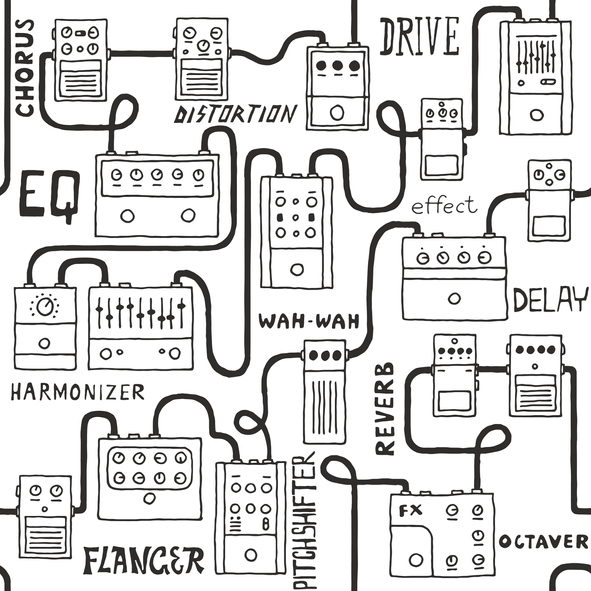What is chorus? Well, other than the catchy part of a song, chorus is one of the most widely used effects in modern (since the 80’s at least) music.
How Does It Work?
Technically speaking, chorusing happens when the audio is duplicated and the second audio sample is moved VERY slightly in and out of pitch with the original. You can clearly hear this effect when your guitar isn’t quite in tune while playing a large chord over all 6 strings. Strangely, the key to chorus is the dry (unaffected) tone which the pitch clashes against causing the “sparkle”. Without the dry tone, we actually get a different effect called vibrato which is the same sound you get when bending a string up and down on your guitar.
Where Is It used?
It was originally an effect found in and designed for keyboards, such as the Juno 60. And once it was put into pedal form (Roland CE-1), guitarists quickly adapted it for their own uses.
Most commonly used on clean tones to add sparkle, chorus and compression quickly defined the 80’s guitar sound and indeed 80’s music in general.
It didn’t take long for guitarists to start experimenting with combining chorus and overdrive/distortion. These tones defined some very famous bands/artists’ sounds, including specific periods of Van Halen, Nirvana, Alice in Chains, Zakk Wylde and so very many more.
So just buy a chorus pedal right?
Well … yes and no.
You can go and pick up pretty much any chorus pedal and you’ll get some great tones. But there are various types of chorus, all of which do something a little differently to the others, and some work better for different styles.
Chorus Ensemble
This is the most common of all choruses, and in the same vein as the original Roland CE-1. They sound great, keep the rate low and depth high for that sparkle tone, or push the rate up for Leslie rotating speaker-like tones. These are great for most uses and super easy to use.
Multi-stage choruses
Very like the former ensembles, however they’re thicker sounding.
Fixed-rate choruses
These are a favorite of many, including myself. They remove the movement often controlled by the rate on other chorus types. With no movement, the pitch difference is fixed, which is where this type of chorus splits into two sub-versions.
• Dimension, as seen in the BOSS DC-2 (and the great DC-2w) simply has 4 switches with no knobs. This makes it one of the best-sounding and easy-to-dial-in pedals of all time.
• Micro-pitch, famously by Eventide, allows you to dial in two pitches, one above and one below the dry signal (your tone without the effect). The ability to adjust these parameters dramatically provides you with a huge amount of flexibility and tones.
These sound great on clean channels but excel on vocals and dirty tones.
Anything else?
Nothing more than to say. Chorus is often the starting point for many on a long modulation journey. Some modulations can be difficult to get right and sound good, but chorus is extremely forgiving and easy to use. Some would say it’s the perfect first modulation pedal for everyone, and we certainly would agree.

